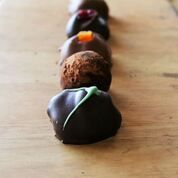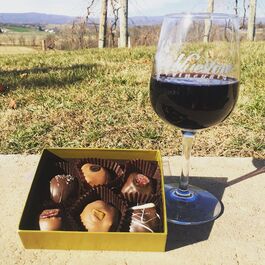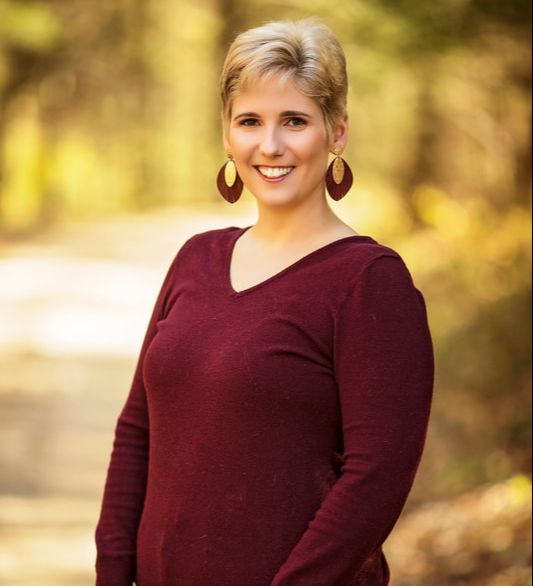 Photo from Warfels Chocolate
Photo from Warfels Chocolate How does one go about deciding which type of chocolates go with different types of wine? That’s the theme of this week’s blog. For those of you who are reading this, it may just come in handy for an annual event that we host each January. More on those details later, but for now, let’s talk about pairings.
Wine and chocolate pairings aren’t much different than other food and wine pairings, it’s about two main things: personal preference and balance. When working with pairings there are overall tips and tricks to help narrow down overall options. With the different kinds of chocolate (white, milk, dark) and flavors (fruits, nuts, spices, etc) that can be added, where to begin? For me, I look at the main component of the chocolate in front of me and work from there.
Let’s say in front of me is a dark chocolate espresso truffle. I love coffee as much as I love wine, so I thought this would be a fun example. The first thing I think about is that this is dark chocolate, which for me, narrows down my choices to red. The next thing I look at is finding a red that isn’t too tannic. A red wine with heavy tannins paired with dark chocolate will generally make it taste bitter. Which narrows my choices even more to say a medium-bodied red because I still want a wine that has structure, but not overpowering. Now, let’s look at the espresso part of the chocolate. Are there any wines available that have similar coffee or espresso characteristics? You can also think about other chocolate in the same way and if it has fruit or nuts and see what wines available have those similar characteristics.
With all that being said for this particular chocolate (and also thinking about the wines we have at Bluestone), I’m going to be looking for a medium-bodied, dry red wine that has coffee or even chocolate notes to it. Final conclusion, Merlot.
This was actually one of the pairings from a few years ago (and also one of my favorites) that I thought would be fun to share with you guys. We paired our 2013 Merlot with a dark chocolate espresso truffle and it was amazing! The 2013 had beautiful coffee notes on the nose and the fruitiness on the end of the palate helped to balance with the dark chocolate.
Moral of the story, start with the main focus of what the chocolate is; white, milk or dark and work your way from there. This can also apply to food pairings as well, by looking at the main dish (pork, beef, chicken, etc) and then look at sauces, seasonings, how it was prepared, etc to narrow down your choices.

Whether you’ve done this event before or this is your first time, I hope these tips will help you with your pairing options and also have fun with figuring out what wines go with what chocolates.
Thanks for tuning in to this week’s edition of Out of the Barrel! Cheers!


 RSS Feed
RSS Feed
